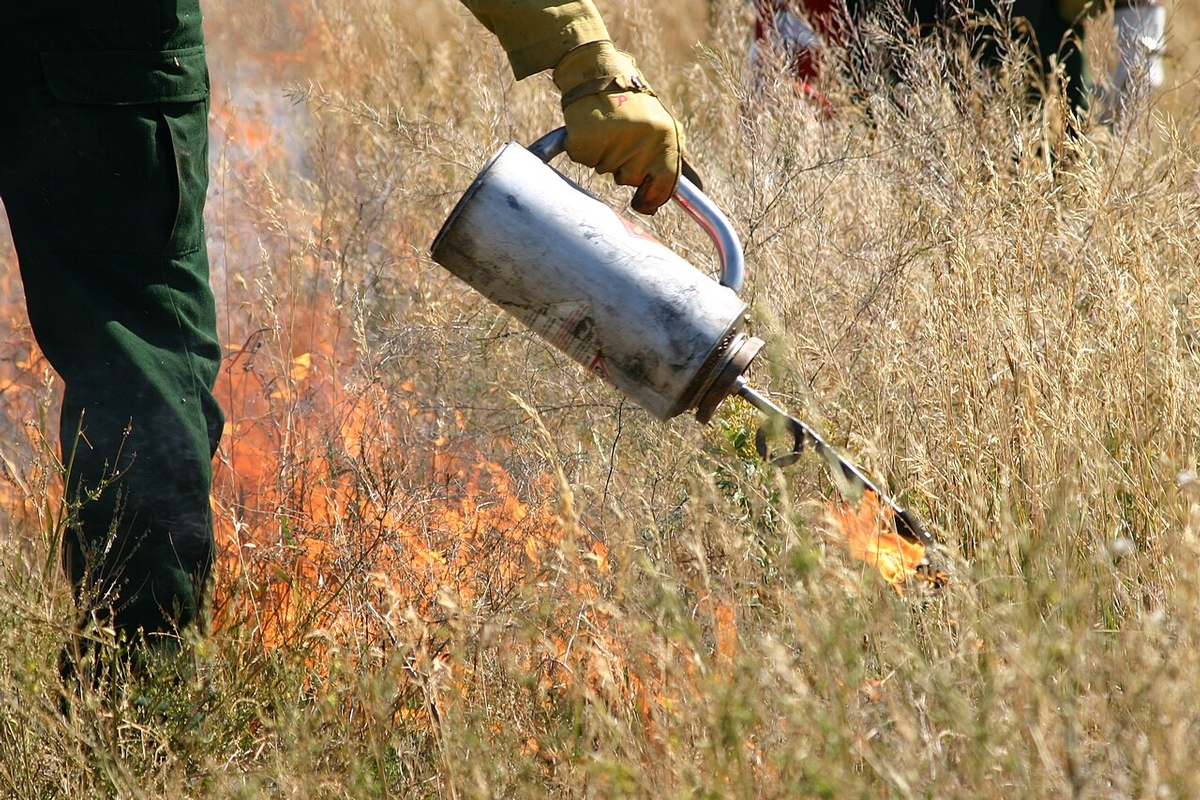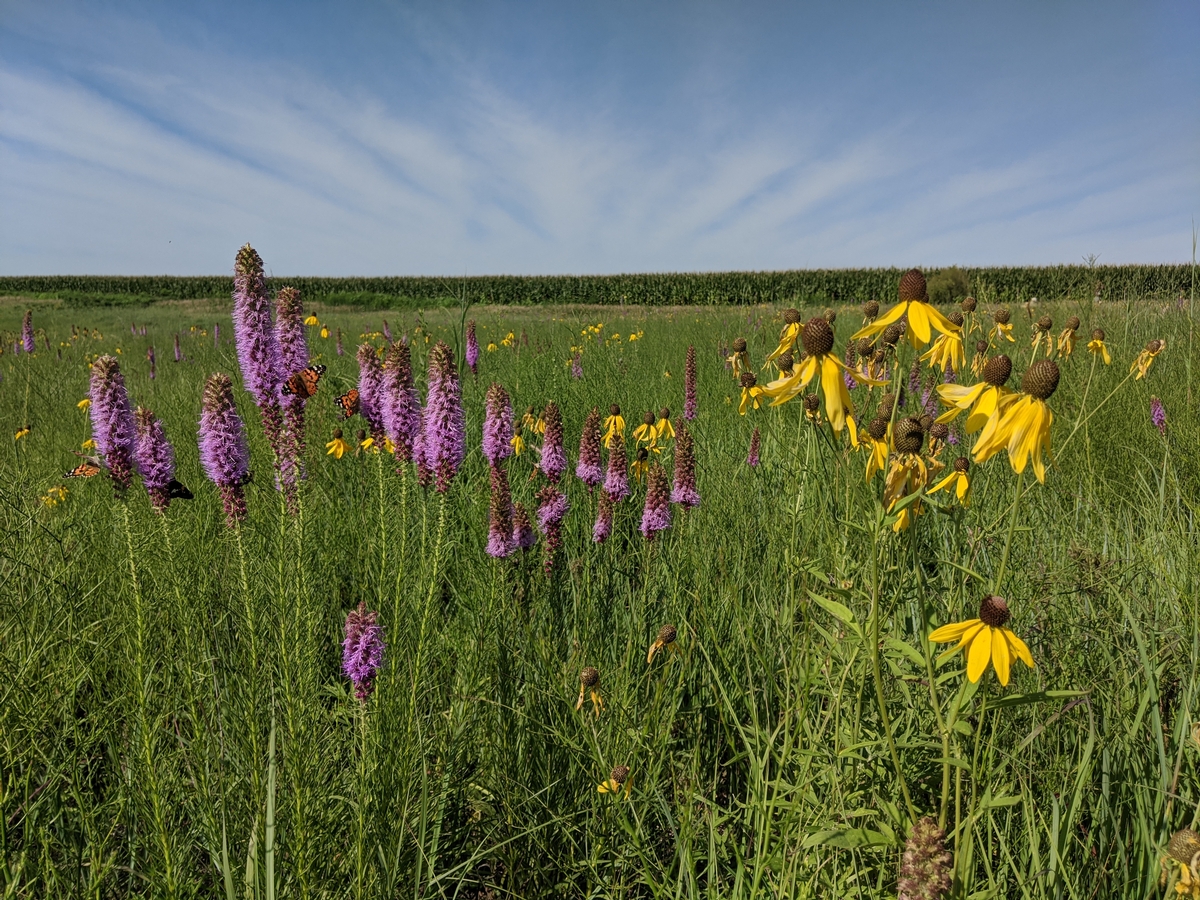Fire in Minnesota

Lighting a prescribed fire in grass with a drip torch.
What is prescribed fire?
Prescribed fire is the purposeful application of fire to a specific area under carefully managed conditions.
Sometimes called controlled burns, prescribed fires are conducted by trained personnel to ensure safety and accomplish land management objectives, often replicating the natural role of fire in an ecosystem. By using prescribed fire, landowners and conservationists can harness the ecological benefits of fire in a safe and controlled way.
Nature needs fire
Prescribed fire plays a crucial role in maintaining healthy wildlife habitat.
Fire is a natural part of Minnesota’s diverse landscape. Minnesota’s plant communities, and the wildlife they support, have evolved with fire as a natural and necessary component. Historically, fire played a vital role in maintaining the health of these communities by consuming dead plant material, returning nutrients to the soil, and encouraging new plant growth.
Use of prescribed fire helps to maintain healthy habitat for wildlife. Upland grasslands especially depend upon fire to stay healthy, but wetlands and forests also benefit from periodic fire. Understanding the benefits that fire has for these communities is essential for their long-term stewardship.

Blooming wildflowers after a burn the previous year.
Benefits of prescribed fire
Promotes diversity of plants and animals: Fire clears old growth, allowing sunlight to reach the ground and foster diverse plant life. This supports various other wildlife including pheasant, quail, deer, songbirds, and pollinators.
Improves soil health and water quality: Prescribed fire returns nutrients to the soil and stimulates new plant growth. It also improves water infiltration, supporting cleaner and more-stable waterbodies.
Manages encroachment of brush: Fire controls the spread of woody plants and brush, maintaining open landscapes and supporting native grassland ecosystems.
Reduces wildfire risk: Prescribed fire removes excess vegetation and debris that fuel wildfires, lowering the risk and intensity of uncontrolled blazes.

